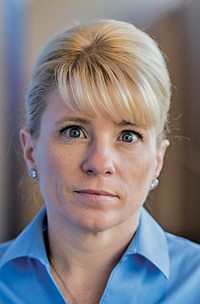Advertisement
Grab your lab coat. Let's get started
Welcome!
Welcome!
Create an account below to get 6 C&EN articles per month, receive newsletters and more - all free.
It seems this is your first time logging in online. Please enter the following information to continue.
As an ACS member you automatically get access to this site. All we need is few more details to create your reading experience.
Not you? Sign in with a different account.
Not you? Sign in with a different account.
ERROR 1
ERROR 1
ERROR 2
ERROR 2
ERROR 2
ERROR 2
ERROR 2
Password and Confirm password must match.
If you have an ACS member number, please enter it here so we can link this account to your membership. (optional)
ERROR 2
ACS values your privacy. By submitting your information, you are gaining access to C&EN and subscribing to our weekly newsletter. We use the information you provide to make your reading experience better, and we will never sell your data to third party members.
Materials
Intel Names Winners Of Its Science Talent Search
No-frills spectrograph nabs teen first place in annual competition
by Linda Wang
March 15, 2007
First Place Masterman talks about her prize-winning research project. (center)
Star Status Vaintrob, who won third place, describes his research while second-place winner Pardon looks on and a New York Times photographer snaps a photo. (right)

First Place Masterman talks about her prize-winning research project. (center)
Star Status Vaintrob, who won third place, describes his research while second-place winner Pardon looks on and a New York Times photographer snaps a photo. (right)
Mary Masterman, 17, a senior at Westmore High School in Oklahoma City, on Tuesday won first place in the 66th annual Intel Science Talent Search for her design of an inexpensive spectrograph that identifies the spectral fingerprints of different kinds of molecules. Science Service, the Washington, D.C.-based publisher of the weekly Science News, has administered the talent search since 1942.
Masterman's spectrograph, a type known as a Littrow spectrograph, splits light and uses a digital camera to record the resulting Raman spectra. The instrument cost only $300 to build; typical commercial spectrographs can cost between $20,000 and $100,000.
Masterman received a $100,000 scholarship that she hopes to use toward an education at either MIT or Caltech.
John Pardon of Durham Academy in North Carolina, whose project entailed solving a classical open problem in differential geometry, won second place and received a $75,000 scholarship. Dmitry Vaintrob of South Eugene High School in Oregon, who investigated ways to associate algebraic structures to topological spaces, won third place and received a $50,000 scholarship.
Other chemistry-related projects on display included Erin M. Schikowski's (Hathaway Brown School, Shaker Heights, Ohio) design of a self-assembling metallo-supramolecular complex that might be used to create polymers with useful mechanical, electronic, and luminescent properties; and Daniel S. Katz's (Hebrew Academy of the Five Towns & Rockaway, Cedarhurst, N.Y.) synthesis of folate-coated platinum nanoparticles for potential application in cancer treatment.
Judges selected the winners from 40 finalists, who presented their projects to the public during a poster exhibition at the National Academy of Sciences in Washington, D.C., on March 11–12.




Join the conversation
Contact the reporter
Submit a Letter to the Editor for publication
Engage with us on Twitter